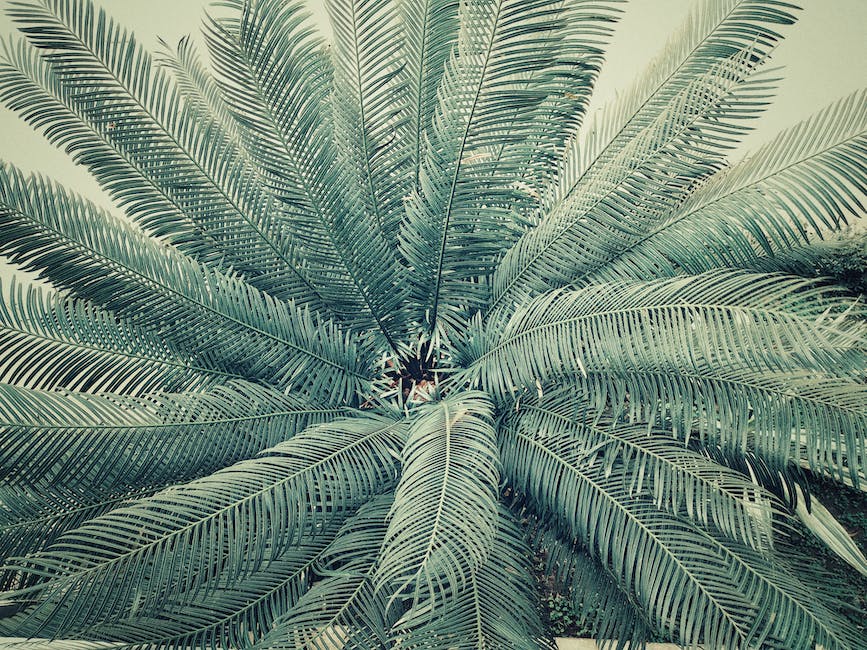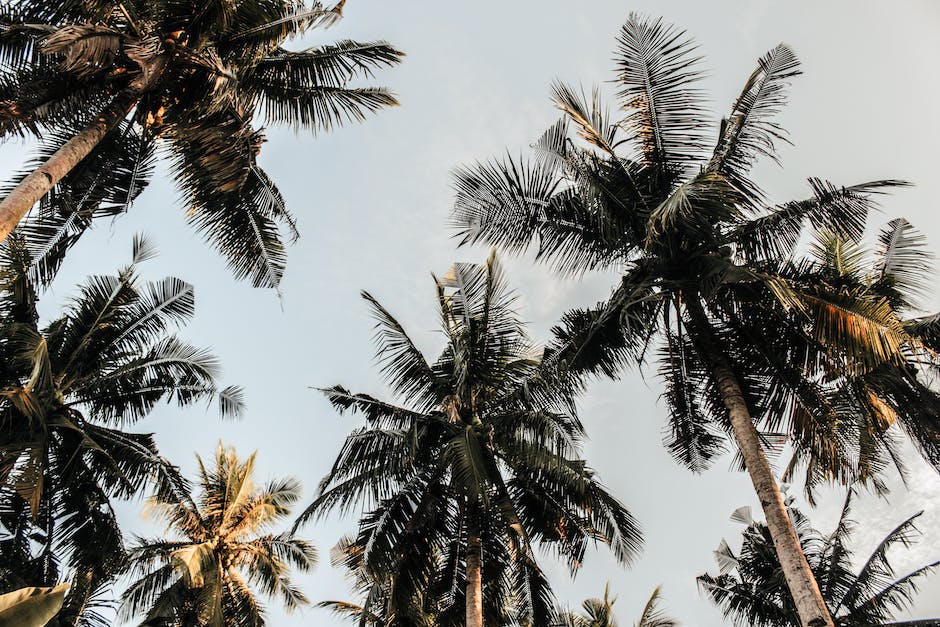Are palm trees really trees? This is a question that has puzzled botanists for centuries. The answer is both yes and no. Palm trees are different from other trees in many ways, but they do share some similarities.
No, palm trees are not trees. They are actually classified as palms, which is a type of flowering plant.
Is a palm tree a real tree?
A tree is a woody perennial plant that typically has a single main stem or trunk and grows to a considerable height. Palms are woody perennials that can reach a height of 20 feet or more, making them qualify as trees.
A tree is a large, woody plant with a single main stem or trunk. Some palms easily fall in this category, while others do not. Most solitary, erect palms would be considered trees under this definition — royal palms, for example.
Why is a palm tree not a tree
Palms are more closely related to grasses than any species you would likely think of as a “tree” (maples, oaks, a Christmas pine/fir, etc). This is because palms do not display secondary growth, which is a trait of trees.
A palm tree is not technically a tree, but a type of grass. Two key differences set it apart from trees: palm trees do not create rings as they grow, and their yearly growth is not marked on the tree. Additionally, palm trees do not grow bark – they are basically the same on the inside as the outside.
Do palm trees have a heart?
The stems of the palms are composed of a trunk or multiple trunks. This is where the heart of the palm is located: at the core of the trunk. The main stem in the palm is what keeps the palm standing upright, and is what keeps it alive. The heart is a soft, delicate structure that is protected by a tough trunk.
A tree is a type of plant that has a single stem or trunk and branches that support leaves. Beneath the ground, a tree has a root system that acts as an anchor and stores the water and nutrients the plant needs to grow. One of the ways we distinguish trees from other plants is their thick and rigid ligneous tissues, which we know as wood.
Why is Florida not planting palm trees?
This is an important note about the average palm in southern Florida only absorbing 5 pounds of CO2 per year. Compared to other trees – oaks, mahogany, pines, and cedars – that can sequester more than 3,000 pounds of CO2 over their lifetime, it may be best to exclude palms in favor of more broadleaf trees or conifers.
Bamboo is a versatile and sustainable resource that has many benefits for people and the environment. Fast-growing and resilient, bamboo can be used for a variety of purposes, from construction to furniture to paper products. Bamboo is also highly efficient at absorbing carbon dioxide and releasing oxygen, making it an excellent tool for mitigating climate change.
Why do palm trees not fall over
When it comes to wind resistance, palm trees are some of the hardiest around. According to arborist Wayne Tyson, this is because their long, thin roots can extend deep into the ground, providing a stable base. So even when healthy, palm trees rarely topple over in high winds – they just blow back and forth.
Joshua trees are actually succulents, not trees. They store water in their leaves, which helps them survive in dry ecosystems. In the desert, they are considered trees because of their size and shape.
Why does Florida only have palm trees?
If you love warm weather and seeing palm trees, then Florida is the place for you! The climate is perfect for the palm tree, and they are a lovely part of the scenery. You won’t be disappointed if you make the decision to live in or visit Florida.
The palm branch has long been associated with victory, and early Christians saw it as a symbol of the triumph of the faithful over the enemies of the soul. This is reflected in the Palm Sunday festival, which celebrates the triumphal entry of Jesus into Jerusalem. In recent years, the palm branch has also been used as a symbol of solidarity with the suffering of Christians in the Middle East.
Is A coconut a grass or a tree
Coconuts are a refreshing and healthy addition to any curry recipe! The scientific name for the coconut you grind for your curry is Cocosnucifera. It is a member of the family Arecaceae, which includes palms, box palms, and p triplets. Coconuts are believed to have originated in Southeast Asia and the Indian subcontinent.
While palm trees have relatively short lifespans in comparison to other trees, there is still a lot of variation among different species. The areca palm, for example, only lives for 40 to 50 years, while the coconut palm can survive for 70 to 100 years. The date palm is one of the longest-lived species, with a lifespan of 100 to 120 years, but in some cases it can even reach 200 years old.
Do palm trees grow forever?
No palm tree has a maximum height, although they may grow slightly taller or shorter depending on care. Once they reach theirmaximum height, they will not grow any taller. This means that palms cannot grow too tall for themselves and will always remain a manageable size.
Heart of palm is a delicacy that is often enjoyed raw, immediately after it is harvested. The tender, white heart of palm is encased in a crunchy bark that is peeled off to reveal the delicate flavor within. Often described as mildly sweet with a flavor similar to jicama, heart of palm is a versatile ingredient that can be enjoyed in a variety of dishes.
Do palm trees ever snap
Palm trees are more resistant to being snapped in extreme conditions than other trees. This is because palm trees have a tough trunk and strong roots. Other trees may have weaker trunks and roots, which makes them more susceptible to being snapped in high winds or severe weather.
Palm trees are an important source of food for many people around the world. Coconuts, dates, acai fruit, and betel nuts are all staples in many diets. Palm oil is also a popular cooking oil. Palm trees are a valuable resource and we should appreciate all that they provide for us.
Final Words
There is some debate on whether or not palm trees are actually trees, as they lack some of the defining characteristics of trees. For example, palm trees do not have a secondary growth, which is when trees thicken in girth each year. Additionally, the trunks of palm trees are not typically woody, but are instead made of a spongy material. Palms also typically have only a single trunk, while most trees have multiple trunks. However, palm trees do have some similarities to trees, such as a central trunk, a defined crown, and a taproot system. Ultimately, whether or not palm trees are considered trees is up for debate.
A palm tree is not really a tree, but a type of shrub or bush. palms are different from other types of plants because they have only one main trunk, and they do not have branches.
Mark Hoffman is a dedicated arborist and tree care specialist with over a decade of experience. His love for trees began when he visited Yosemite National Park as a teenager and was awestruck by the giant sequoias. Mark pursued his passion by studying forestry at Michigan Technological University, where he earned a Bachelor of Science degree.
Since then, he has worked tirelessly in the field of arboriculture, helping to preserve and protect trees in his community. His expertise and dedication have made him a respected leader in the industry and a valuable resource for anyone seeking advice on tree care.
